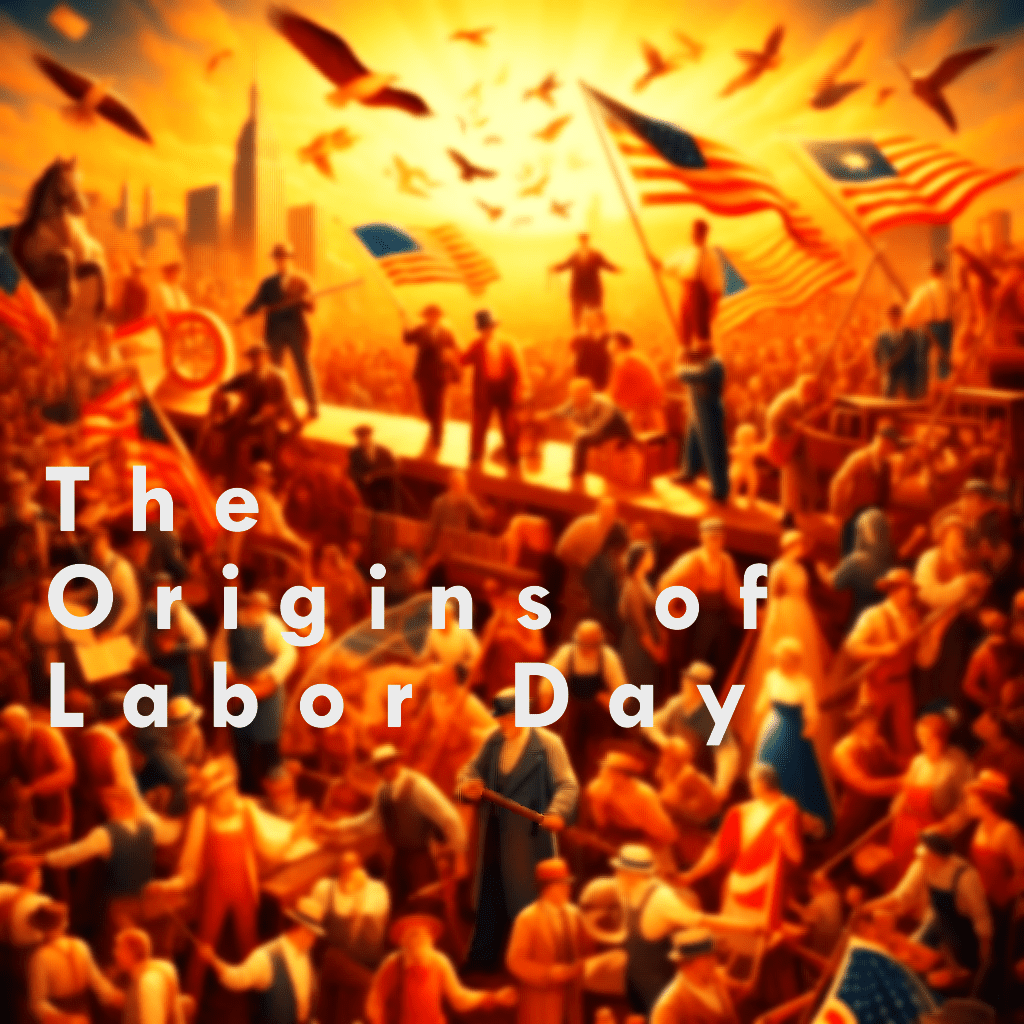The Origins of Labor Day
Labor Day, celebrated on the first Monday in September in the United States, honors the American labor movement and the contributions of workers to the development and prosperity of the country. The origins of this national holiday date back to the late 19th century, a period marked by intense labor unrest and the growing power of labor unions.

Early Labor Movements and the Need for Reform
The Industrial Revolution transformed the American economy from agrarian to industrial, leading to rapid urbanization and the growth of factories. While this shift brought economic opportunities, it also led to harsh working conditions. Workers faced long hours, often 12-16 hours a day, low wages, and unsafe environments. Child labor was rampant, and there were few protections for workers’ rights.
The plight of the working class led to the formation of labor unions, which sought to improve working conditions, secure better wages, and reduce the workday. By the late 19th century, labor strikes and rallies became common as workers demanded their rights. The Origins of Labor Day
The First Labor Day Celebration
The first unofficial Labor Day was celebrated on September 5, 1882, in New York City. It was organized by the Central Labor Union (CLU), a group that represented multiple unions in the city. The event featured a parade through the streets of Manhattan, with thousands of workers marching to demonstrate the strength and solidarity of the labor movement. The parade was followed by a festival with speeches, music, and picnics, embodying the spirit of unity among workers.
The success of the first Labor Day celebration inspired other cities and states to adopt the idea. Oregon became the first state to make Labor Day an official holiday in 1887, and by the end of the decade, several more states had followed suit.
The Role of the Pullman Strike
One of the pivotal events that led to the national recognition of Labor Day was the Pullman Strike of 1894. The strike began at the Pullman Company in Chicago, where workers protested wage cuts and high rents in the company-owned town. The strike spread nationwide, disrupting rail traffic and leading to a confrontation between labor and the federal government. The Origins of Labor Day
President Grover Cleveland, facing pressure to resolve the strike, sent federal troops to break it up, resulting in violence and several deaths. In the aftermath, there was widespread public sympathy for the workers, and the federal government sought to appease the labor movement.
To mend relations with American workers, Congress swiftly passed legislation making Labor Day a national holiday. On June 28, 1894, President Cleveland signed the bill into law, designating the first Monday in September as Labor Day.
The Legacy
Labor Day has evolved over the years from a day of labor protests and parades to a more general celebration of the contributions of American workers. It marks the unofficial end of summer, with many people enjoying picnics, barbecues, and other leisure activities.
However, the day also serves as a reminder of the ongoing struggles and achievements of the labor movement. Issues like fair wages, workplace safety, and workers’ rights continue to be relevant, reflecting the enduring importance of the values that Labor Day represents.
Today, Labor Day stands as a tribute to the sacrifices and contributions of American workers, whose efforts have shaped the nation’s economic and social landscape. It is a day to reflect on the progress made in labor rights and the work that still lies ahead in the pursuit of justice and equality in the workplace.
